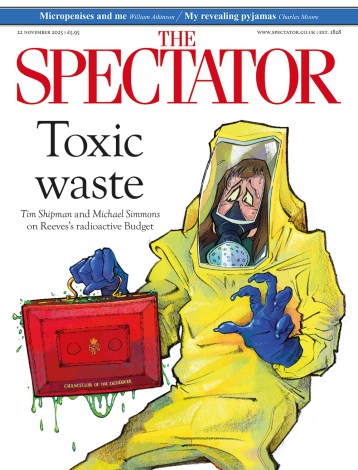In that wonderful old Broadway musical Guys and Dolls, gambler Sky Masterson is romancing Sister Sarah Brown of the Salvation Army after an all-nighter of boozing it up in Havana. Walking her home to her mission in New York, he tells her that the only place in the world where ‘the dawn is turned on by an electrician’ is Times Square. She swoons. That, of course, was the good old days, when Runyonesque characters like Nathan Detroit, Nicely-Nicely, Harry the Horse, Big Jule from Chicago and Liver Lips Louis ruled Broadway and its environs.
In that magical make-believe world, Nathan married Miss Adelaide (after a 14-year engagement) and Sky got hitched to Sarah. The play had a very happy ending, although if there is a revival any time soon, Nathan will most likely marry Sky and Miss Adelaide Sister Sarah. (The clapped-out NY Times had a long story last Sunday about a transgender’s sex life, and an editorial by a gay man on why people like himself should boycott straight marriages. No wonder the Wall Street Journal is wiping the floor with the old bag. Saturation coverage of queenly matters.)
Many people my age wish to have lived in another era, and I do often get lost in pipe dreams of times past, but New York does this to me more than any other city because the place has changed so radically. Whites are now in the minority, cops are no longer polite or Irish, men no longer wear suits and hats, and Times Square’s perfect combination of seediness and glamour has been lost for ever to a blur of moving electric surfaces advertising junk. Worse, the Sky Mastersons and Nathan Detroits have been pushed aside by dusky drug dealers and pimps, not to mention the marauding groups of young black toughs who appear out of nowhere and help themselves to any available goods.
Back in the early Fifties, Times Square was a young man’s paradise. One could see risqué foreign movies, pick up riskier women, and even flash a phony draft card and get served. The East Side was reserved for exclusive, gaudy supper clubs, as they were called, places like El Morocco and The Stork Club, where unsophisticated youth had no chance. In Times Square things evened themselves out.
Edward Hopper’s ‘Nighthawks’ features a diner bathed in a golden, melancholy light, a typical city scene. Hopper painted ‘Nighthawks’ in 1941, and it is his most recognisable work. Hopper is my favourite painter because his shop cornices, his bricks and fire escapes that loom in the background, his use of light all remind me so much of a vanished New York — vanished to make space for luxury condos and expensive office towers. Someone wrote that it’s an easy leap to missing something that was never there. Hopper’s diner in ‘Nighthawks’ never existed except in his imagination, but there were hundreds like them which very much existed, just as inexpensive candy stores, tobacco shops selling cigars for 5 cents, and bakeries used to line most streets in the village and below Park Avenue.
Still, in summertime the place reeks of sex and promise. From my house I see the peaks and ridgelines of buildings along Fifth, Madison and Park Avenues, not totally changed since the Fifties, when I used to contemplate them from 20 blocks south. Ornate and chunky ‘cube’ apartment buildings, spare, neoclassical ones and the odd modernist design showed off American dynamism at its best. Plus the roof tops of brownstones, where girls used to sunbathe in their swimsuits and we used to stare at them for hours on end. Across the park, on Central Park West, there was a fairy-tale confection of towers, wrought-iron grills, mock chateaux replete with peaked gables.
Great pre-war buildings such as the Beresford and the Dakota are still around, thank God, but others have been replaced by Trump and Frank Gehry horrors, with perimeters of glass expressing vertical living at its worst. What the rich of yesterday would have thought of today’s flimsy castles in the sky is another matter. Residents of grand buildings of the past could choose to take their meals in vast elegant dining rooms, like passengers on grand liners. Today I’d hate to sit down and break bread with the nouveaux riches slobs I come across daily in chic restaurants.
And, speaking of slobs, Elaine’s, the legendary dive where writers and artists used to meet with cops and firemen, has closed this week. Elaine Kaufman died six months ago, and the place filled up with slobs who thought being loud and obnoxious meant one was an artist or a writer. Elaine used to throw them out. The grotesque woman she left the place to did not know the difference. I’m glad the place closed. Too many fond memories of drunken all-nighters. That was the heyday of Clay Felker, Tom Wolfe, Norman Mailer, George Plimpton, even the poor little Greek boy. I used to hold editorial meetings there for ‘Taki’s Top Drawer’ every Sunday night.
As everywhere, New York has changed. People now speak of the city the way Londoners speak of London. They promote it in the manner Londoners try to hide the brittleness of their place. New York used to be arrogant and self-assured. Germans and Scotch-Irish, and in a way Jews, too, made sure of it. New York led the arts from the end of the war until the end of the century. Creative types thronged to the city to produce their art. No longer. Now it’s only money that counts.






Comments